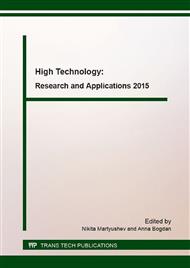[1]
Gifford W, Longsworth R. Pulse-tube refrigeration. Trans ASME, J Eng Ind (series B). 86 (1964) 264–8.
Google Scholar
[2]
Y.L. Ju, C. Wang and Y. Zhou Numerical simulation and experimental verification of the oscillating flow in pulse tube refrigerator Cryogenics 38 (1998) 169–176.
DOI: 10.1016/s0011-2275(97)00139-2
Google Scholar
[3]
G.W. Swift, Thermoacoustics: a Unifying Perspective for Some Engines and Refrigerators, Acoustical Society of America, Melville, NY, (2002).
Google Scholar
[4]
B. Ward, J. Clark, G.W. Swift, User Manual: Design Environment for Low- Amplitude Thermoacoustic Energy Conversion, Los Alamos National Laboratory, (2008).
Google Scholar
[5]
N. Rott, Thermoacoustics, in: C. -S. Yih (Ed. ), Advances in Applied Mechanics, vol. 20, Academic Press, New York, 1980, pp.135-175.
Google Scholar
[6]
Y.L. He , Y.B. Tao, F. Gao A new computational model for entire pulse tube refrigerators: Model description and numerical validation Cryogenics 49 (2009) 84–93.
DOI: 10.1016/j.cryogenics.2008.11.003
Google Scholar
[7]
J.S. Cha, S.M. Ghiaasiaan, P.V. Desai, J.P. Harvey, C.S. Kirkconnell Multi-dimensional flow effects in pulse tube refrigerators Cryogenics 46 (2006) 658–665.
DOI: 10.1016/j.cryogenics.2006.03.001
Google Scholar
[8]
T.R. Ashwin, G.S.V.L. Narasimham, Subhash Jacob CFD analysis of high frequency miniature pulse tube refrigerators for space applications with thermal non-equilibrium model Applied Thermal Engineering 30 (2010) 152–166.
DOI: 10.1016/j.applthermaleng.2009.07.015
Google Scholar
[9]
Dion Savio Antao, Bakhtier Farouk Experimental and numerical investigations of an orifice typе cryogenic pulse tube refrigerator Applied Thermal Engineering 50 (2013) 112-123.
DOI: 10.1016/j.applthermaleng.2012.05.015
Google Scholar
[10]
Mikulin E, Tarasov A, Shrebyonock M. Low-temperature expansion pulse tubes. Adv Cryogen Eng 29 (1984) 629–37.
Google Scholar
[11]
ESI-CFD-Inc., CFD-ACE V2009. 4 User Manual, ESI Group, Huntsville, AL, (2009).
Google Scholar


